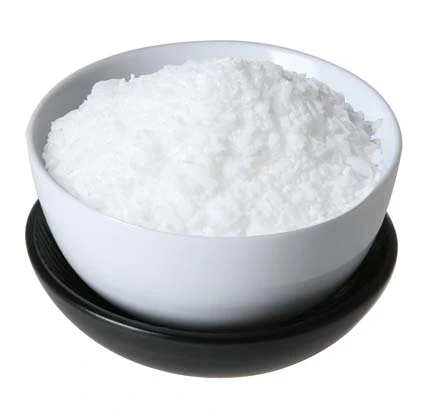IUPAC Name
Octadecanoic acid
Cas Number
57-11-4
HS Code
3823.11.00
Formula
C18H36O2
Appearance
White Beads/Flakes
Common Names
Octadecanoic acid
Packaging
25 Kg Bag
Octadecanoic acid, synonymous with stearic acid, represents a saturated fatty acid present in high-fat plant and animal sources, renowned for its myriad health benefits. Presenting as a waxy white solid with a molar mass of 284.48 g/mol and a chemical formula of CH3(CH2)16CO2H, it holds a distinct place. Natural fats encompass oleic, palmitic, and stearic acids, with nearly equal proportions of oleic and palmitic acids pivotal for commercial stearic acid production. Frequently encountered in nature as a mixed triglyceride or an ester of fatty alcohol, stearic acid is notably more concentrated in animal fats compared to their plant-derived counterparts.
Manufacturing Process
Stearic acid is synthesized predominantly from fatty acids, and the production process is customized to meet specific quality standards and chosen raw materials. Various procedures are utilized to ensure adherence to these criteria. Tallow and grease serve as the primary source materials commonly used in the synthesis of stearic acid. The production process comprises two essential stages:
a. Hydrolysis: Raw materials (oil or fat) undergo hydrolysis, leading to the generation of glycerin and fatty acids. Subsequently, the two final products are separated.
b. Separation: The refinement of stearic acid involves the purification and separation of the fatty acid mixture in the second stage.
Octadecanoic acid, synonymous with stearic acid, represents a saturated fatty acid present in high-fat plant and animal sources, renowned for its myriad health benefits. Presenting as a waxy white solid with a molar mass of 284.48 g/mol and a chemical formula of CH3(CH2)16CO2H, it holds a distinct place. Natural fats encompass oleic, palmitic, and stearic acids, with nearly equal proportions of oleic and palmitic acids pivotal for commercial stearic acid production. Frequently encountered in nature as a mixed triglyceride or an ester of fatty alcohol, stearic acid is notably more concentrated in animal fats compared to their plant-derived counterparts.
Manufacturing Process
Stearic acid is synthesized predominantly from fatty acids, and the production process is customized to meet specific quality standards and chosen raw materials. Various procedures are utilized to ensure adherence to these criteria. Tallow and grease serve as the primary source materials commonly used in the synthesis of stearic acid. The production process comprises two essential stages:
a. Hydrolysis: Raw materials (oil or fat) undergo hydrolysis, leading to the generation of glycerin and fatty acids. Subsequently, the two final products are separated.
b. Separation: The refinement of stearic acid involves the purification and separation of the fatty acid mixture in the second stage.
